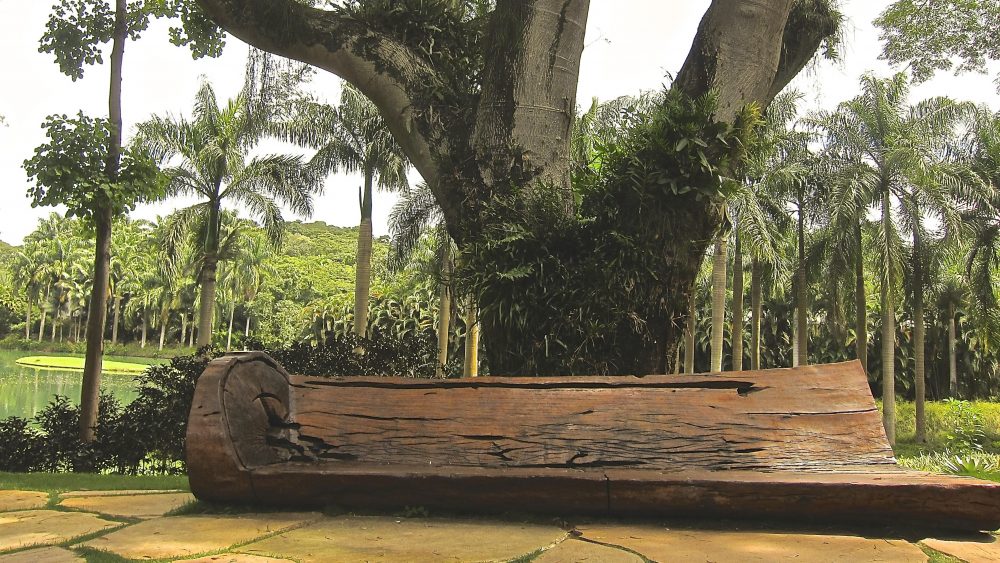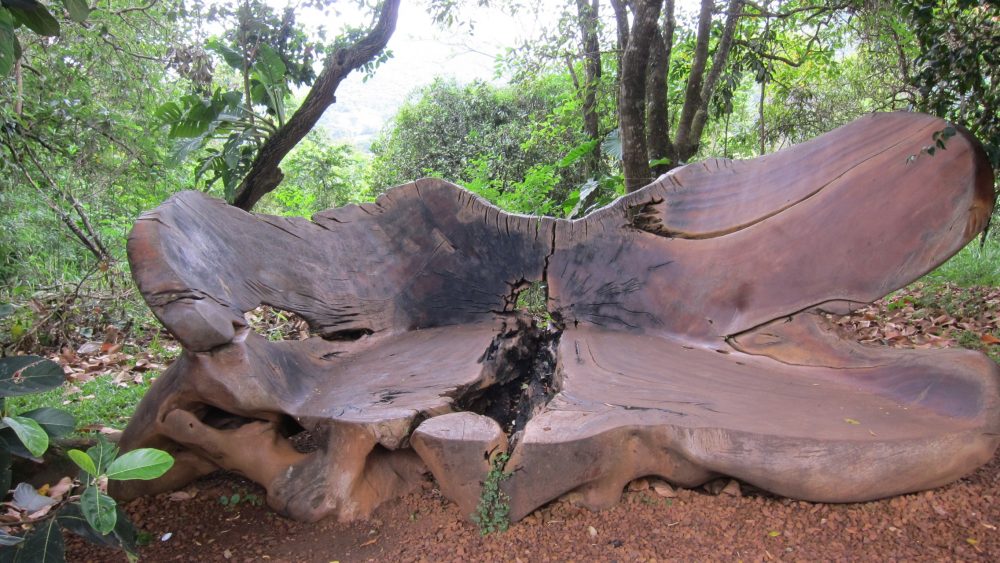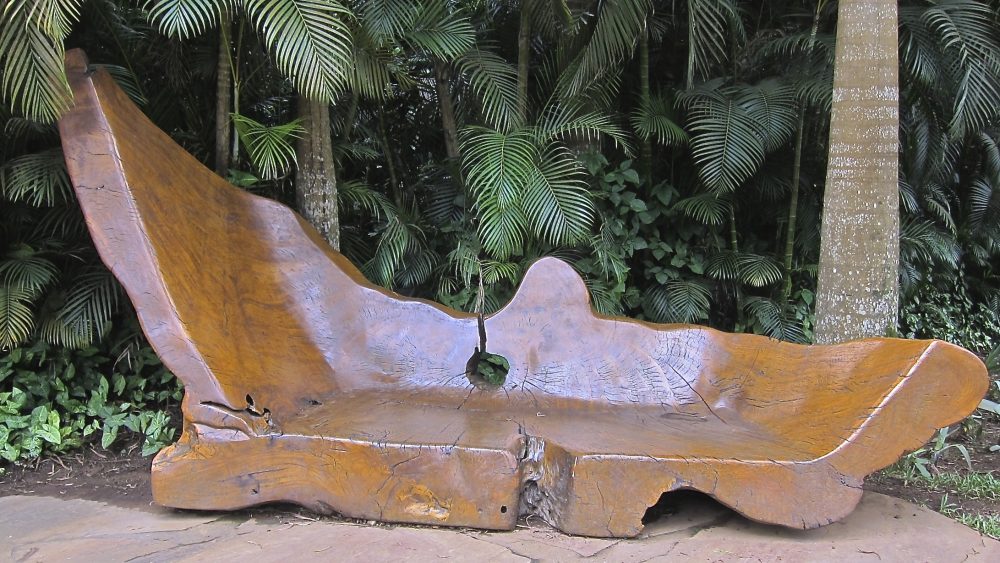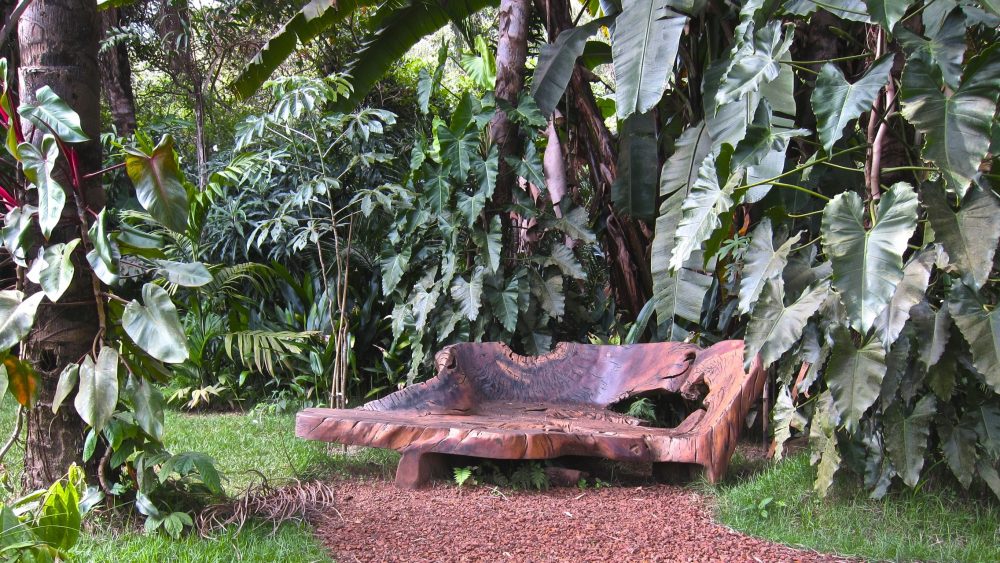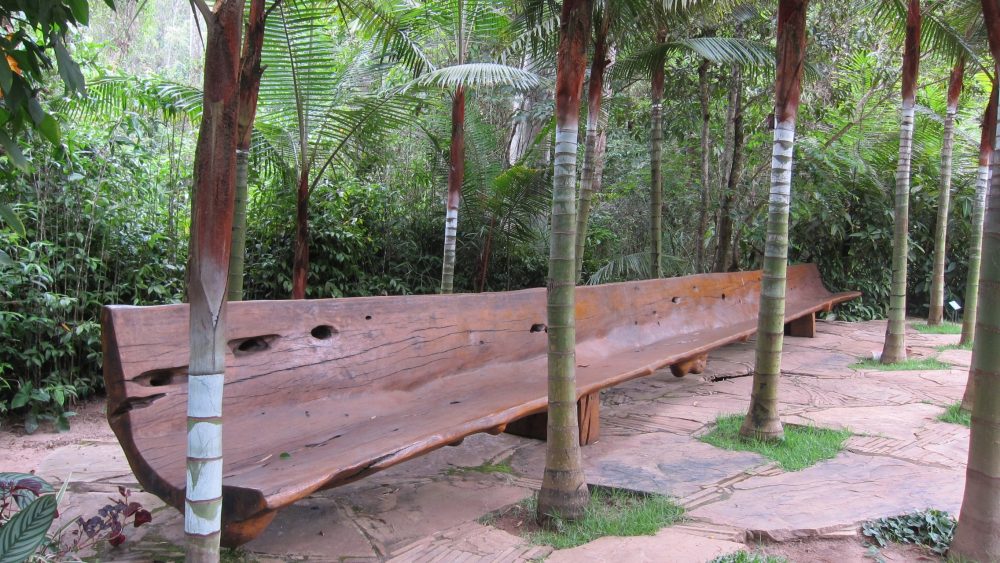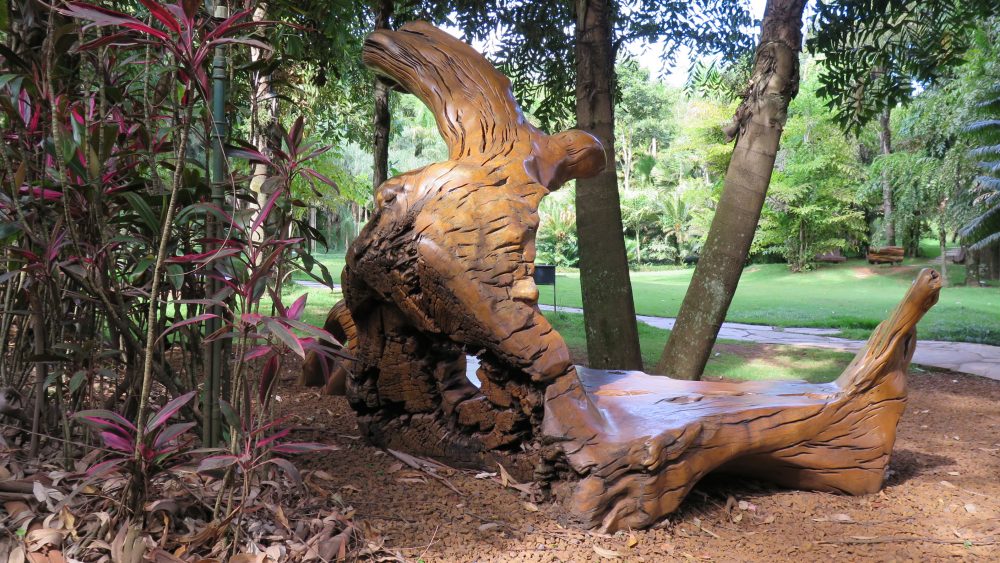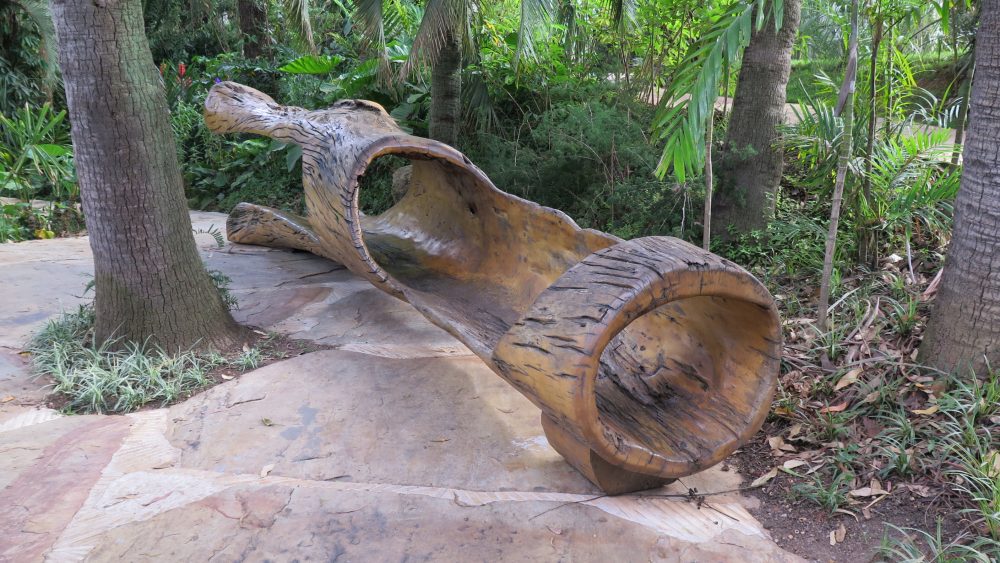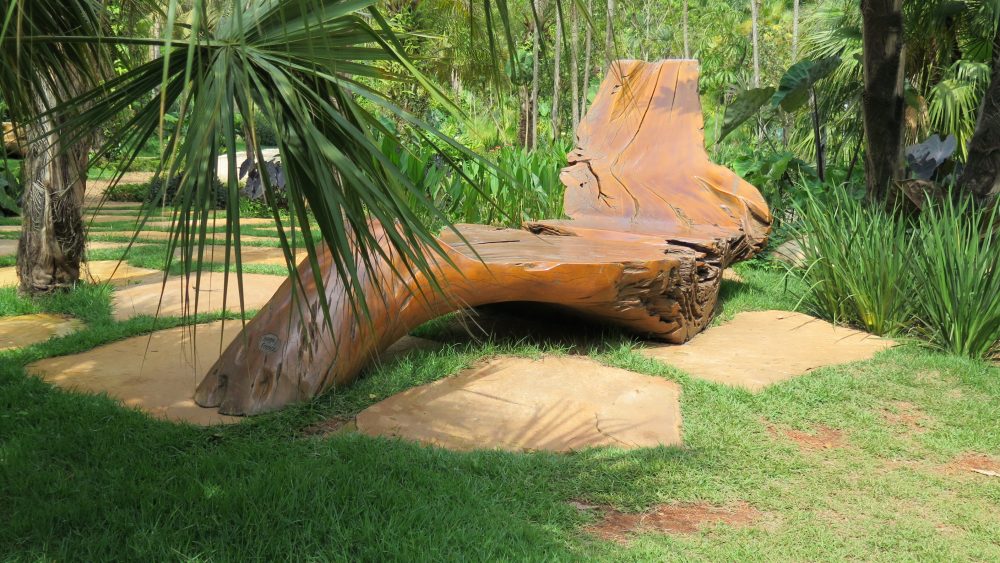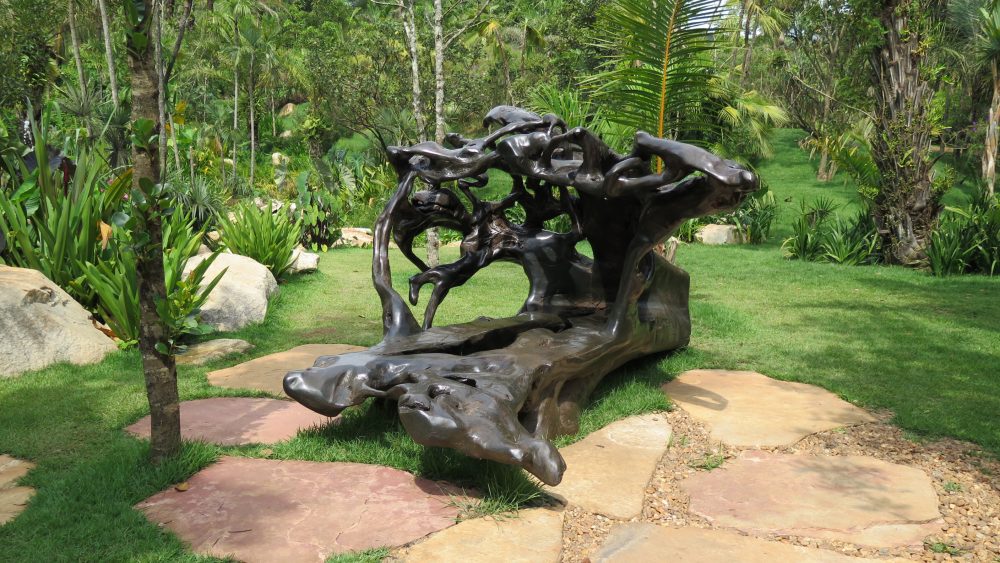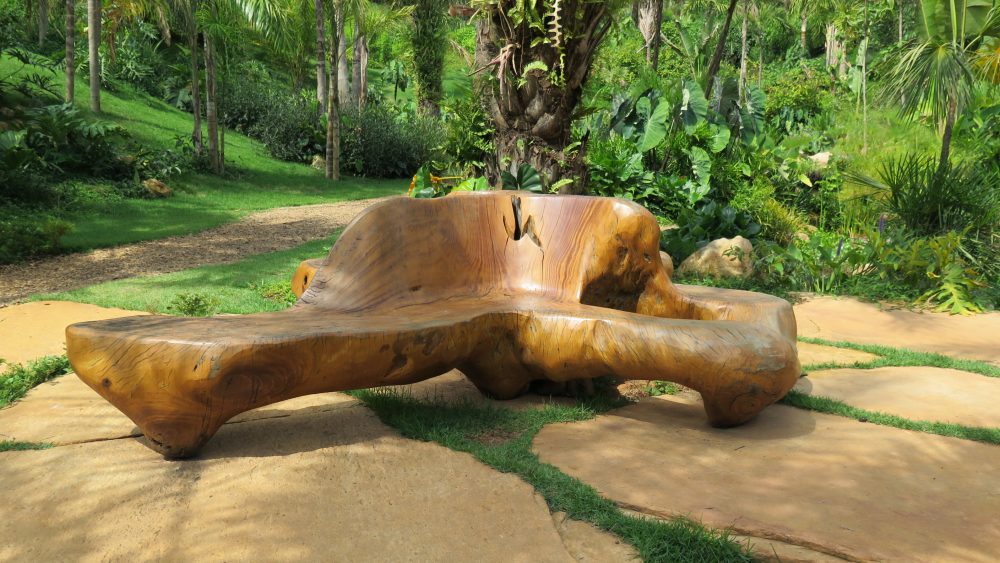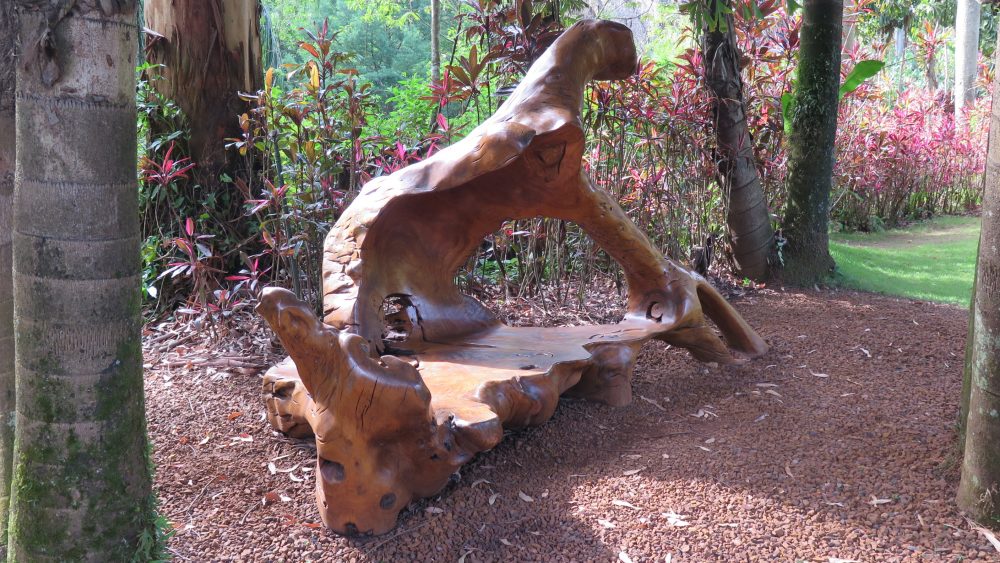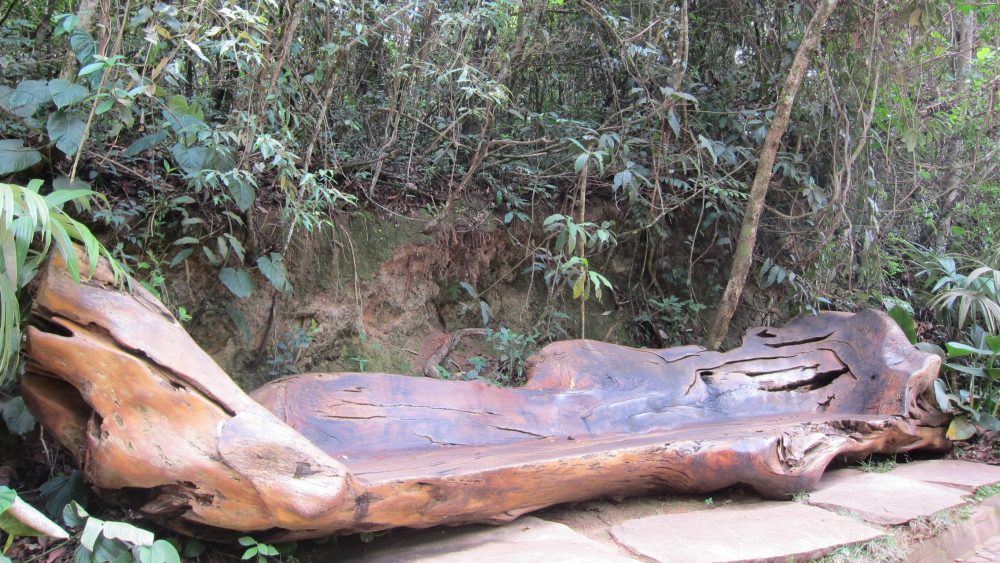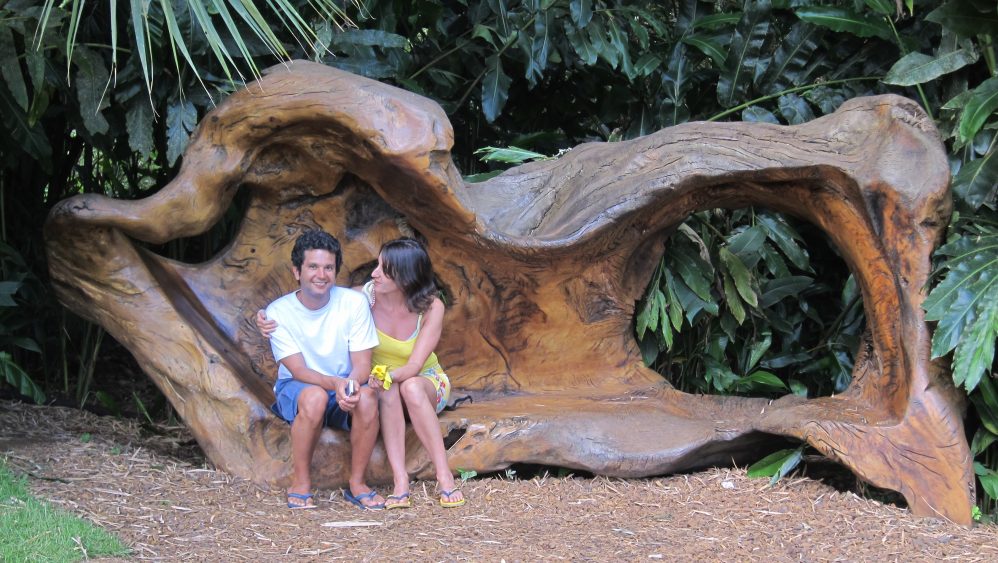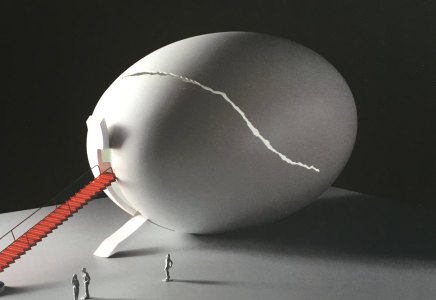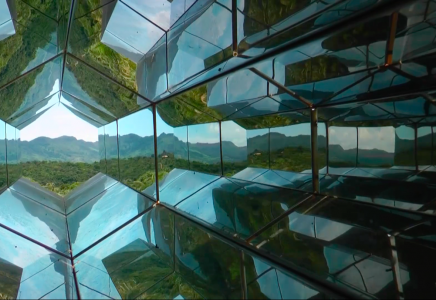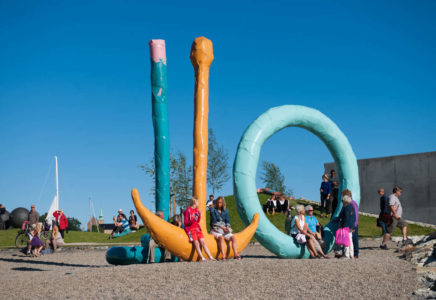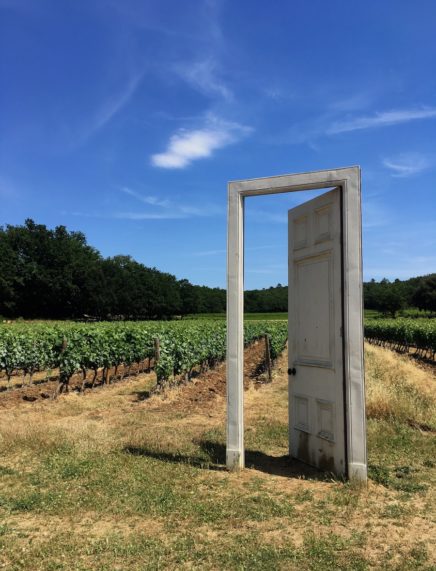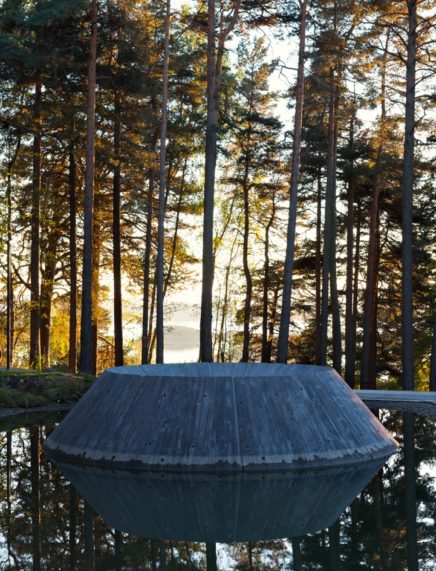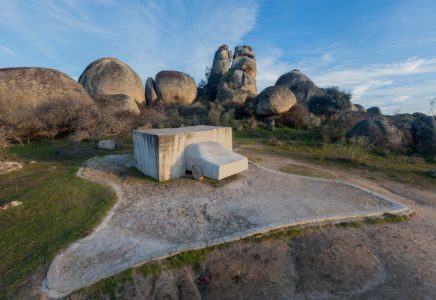Imperial Sculptures, The Benches of Inhotim
When visiting the Brazilian contemporary arts garden of Inhotim, for the first time -or even the second or third time, for that matter—“unboundedness” is the word that springs to mind.
Everything about it is monumental: from its size to the means that were used to transform this former mine, located two hours away from Belo Horizonte (state of Minas Gérais), into a magical garden dedicated to art and nature. At the very reception area, one comes across an Olympian bench. Then along the paths, other benches, each one yet more imposing, more sculptural. The author: Hugo França.
Brazilian artist born in 1954 in Porto Alegre, wishing to live more in tune with nature, França moves in 1980 to the state of Bahia. There he discovers the waste created by deforestation. Enormous trees abandoned like cadavers. He then begins to transform this wonderful wealth in sculpture/furniture.
By their size, by their patina, by the quality of the wood of which they are made, by the scale of the sitting space they offer to visitors, these imperial benches carved in majestic trees are the “other” works of art worth seeing at Inhotim.
For if one comes to Inhotim, it is first and foremost to see the finest contemporary artworks collected and installed in less than ten years by Brazilian industrial magnate Bernardo Paz. The works, displayed outdoors or in pavilions for the most part dedicated to one artist, are surrounded by lush, extravagant but always majestic vegetation. More than twenty five thousand palm trees and hundreds of plant species tended year round by no less than a hundred and twenty gardeners… enough to turn Inhotim into a one-of-kind botanical garden where one can lie down under the tree shades.
Inhotim
Rua b. 20. Brumadinho
MG, Brasil
www.inhotim.org.br
